Dance of the Wild
The meaningful life of herbalist Dina Falconi
By Pauline Uchmanowicz | Photos by Steffen Thalemann | Summer 2013 | Features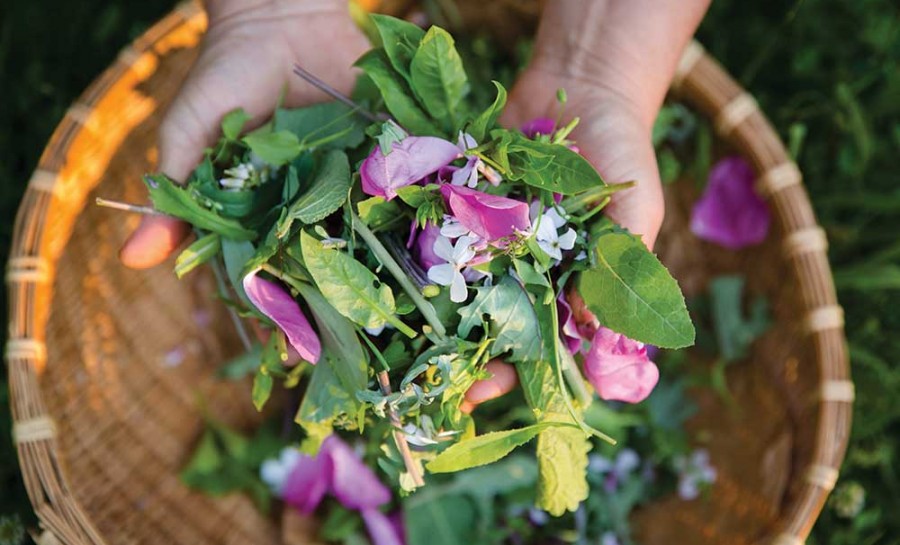
Dina Falconi, herbalist, teacher, and author, has spent over 40 years looking for nothing less than the meaning of life. Relating the health of the land and the health of the body, her focus is on balancing the wild and the cultivated. The search has brought her to master the related fields of nutrition, herbal healing, and permaculture.
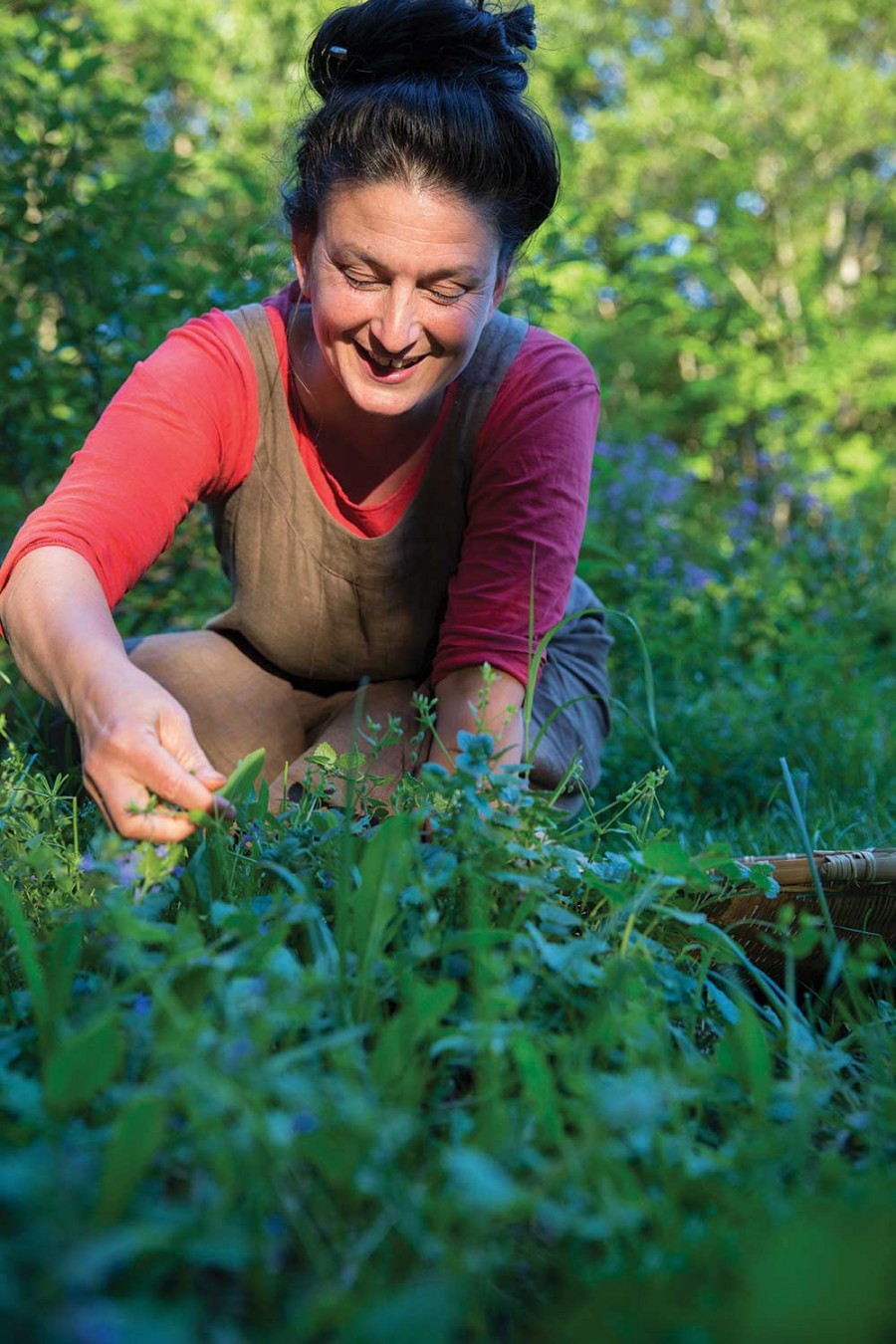
Falcon Formulations; Earthly Extracts
468 County Route #2, Accord
(845) 687-8938
foragingandfeasting.com
Falconi’s work permeates her life, and her ideals have defined the beauty of her property. Its charm is in its character—a rustic utopia that developed over time, through engaging the natural life found there. The six-acre homestead where Falconi lives with her husband, Tim Allen, nestles into a hillside in the Stone Ridge hamlet of Lyonsville, and integrates her arts and crafts-accented farmhouse (designed by the former owner, architect Peter Reynolds) with domesticated and wild gardens, fruit orchards, and a chicken yard comingled with stacks of firewood, natural meadows, and woodlands. The complexity of the gardens is stunning: Over 200 plant species thrive there, providing the ingredients for the herbal formulations and body care products she makes in her rustic apothecary, and the delicious food that springs from her kitchen.
Her barn, an airy, light-filled laboratory within rough-hewn walls, is an inviting space for working with the plants. Jars, bottles, funnels, scales, cooking utensils, and shelves of formula and recipe notebooks surround a central table. Protected from sunlight, the apothecary stores rows of bottled dried herbs and handcrafted potions. Falconi’s private herbal and nutritional consultations take place in a cozy, attached office.
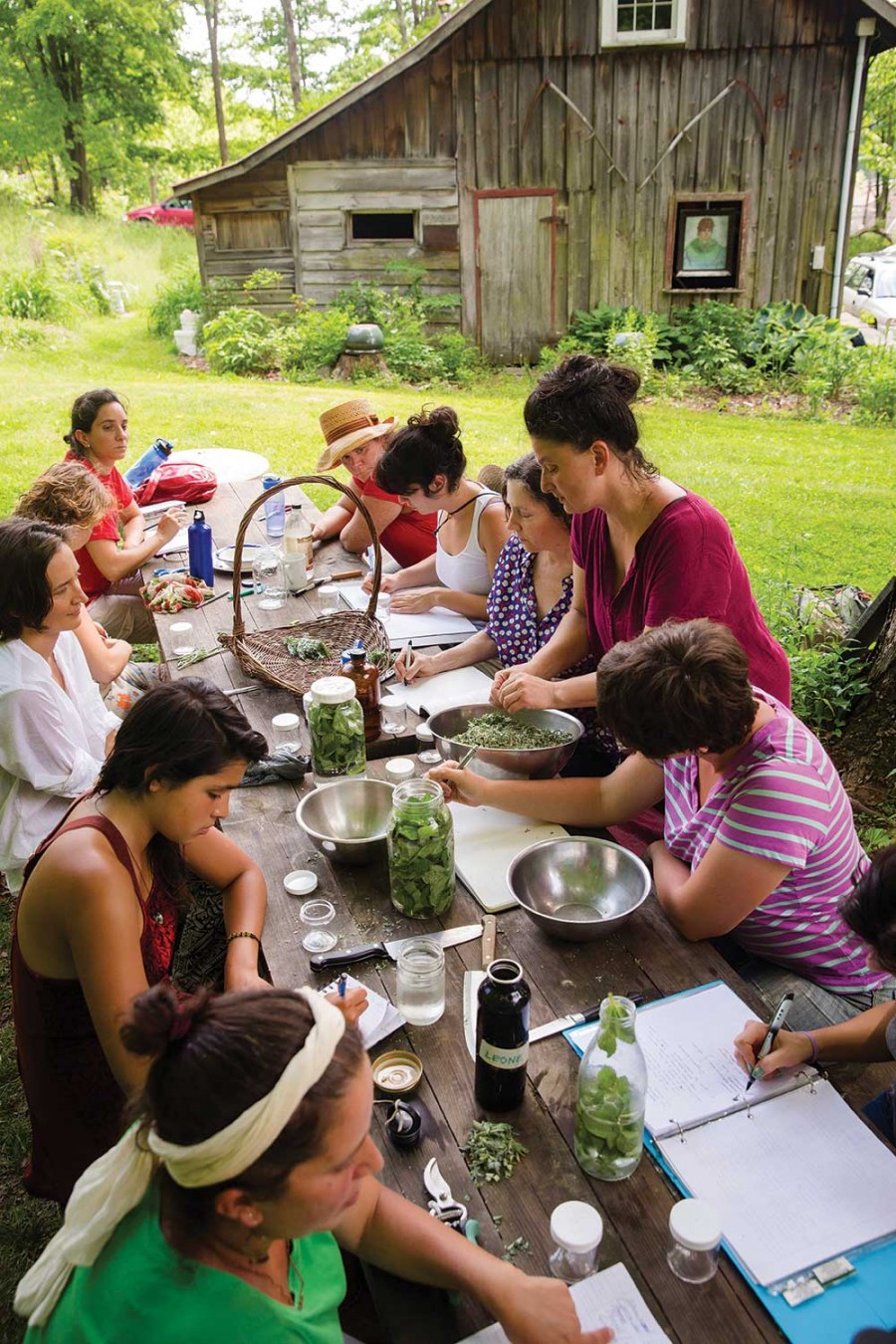
May through October, Falconi teaches an herbal intensive on medicinal plant identification, wild food foraging, self-treatment, and techniques for integrating the plants into homemade medicines, skin-care products, and foods. Her students get physical with the plants, on their hands and knees, all senses engaged, getting to know the plants as they crush them for tincture making, or gently pluck edible blossoms for the jewel-studded compound-butter that accompanies a lunch of field-foraged salad drizzled with herbal vinaigrette, wild greens pesto on sourdough bread, and a baked wild greens au gratin. Grown from the ideal that food production should aim for local sourcing, and food consumption for nutrient density, classes focus on self-care and self-empowerment.
A food activist and author in addition to a clinician, grower, and educator, Falconi has developed integrated practices that model how we can cooperate with the food system to redistribute and regionalize wealth. The inclination to understand how to live well, and to share her knowledge has been with her since childhood.
Falconi, who grew up in the East Village, discovered the culinary arts at age 11 when a family friend, who had cured himself of terminal illness through healthy eating, gave the young headache sufferer her first herb book. She eliminated processed foods from her diet, replaced them with fresh, whole foods, and started to cook for herself. Abandoning pharmaceuticals and synthetic body-care products, the budding food visionary made the connection between personal and planetary health and began to explore simpler preparations. Her headaches improved, and her overall health increased.
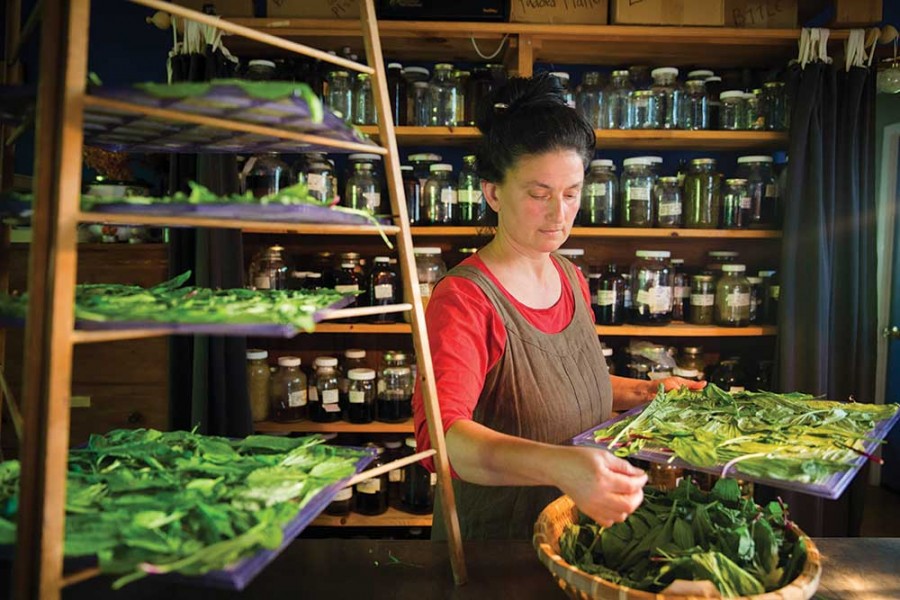
Later, at summer camp, she began to forage, picking mint leaves for tea, and plucking berries from brambles, and her interest blossomed.
Falconi studied theater and dance at the High School of Performing Arts during its Fame years, and did a pre-med stint at Colgate University, where the then vegan trained the dining hall staff to cook unfamiliar vegetarian foods like tofu and tempeh. Next came a semester abroad steeped in yoga and Tamil philosophy. “In India, I didn’t see antimaterialism at all,” Falconi recollects. “You don’t hit nirvana by denying the body, but by celebrating the body and caring for it.” She transferred to Bard College, where she earned her degree studying choreography and fine arts. There she also met her life-partner, Tim Allen. She continues to see a relationship between her lifelong interest in art and nutrition: “I like to problem solve, to see where I can make change—to see whole pictures and then take them apart to put back together.” Falconi says, “That’s where my creative training comes in.”
At the end of college and pregnant with her son Sam, Falconi started her firstgarden on her newly purchased property. She gave up welding and painting, wanting to avoid the toxic materials involved, and instead explored the herbs growing outside her back door. “When I could actually see the raspberry leaves for my tea growing wild, my psyche became integrated with the Earth,” she says.
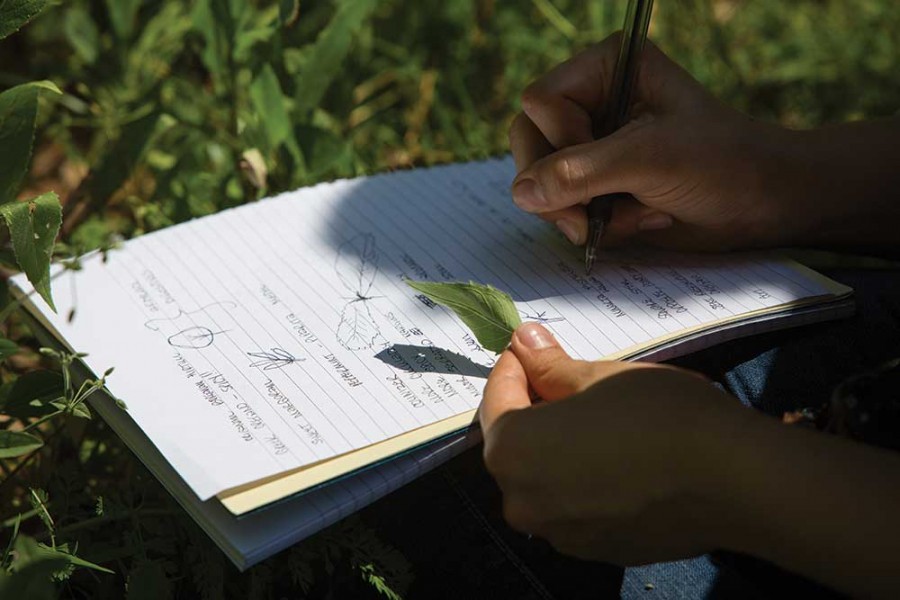
After completing a two-year apprenticeship with herbalist Pam Montgomery, she was able to identify and harvest plants from their natural habitats and dispense broad-strokes herbal healing. “But I wanted to tailor-make the shirt to fit the person,” Falconi remembers. To increase her clinical knowledge, she commuted to New York for one-on-one tutorials with William LeSassier. Under LeSassier, the day’s reigning herbal clinician, she perfected diagnosis (how to “read” a client) as well as protocol (preparation of individualized formulas). After three years, he pronounced her “cooked.” By the time she finished her studies, she was a familiar presenter at international herb symposia, and Falconi saw her reputation flourish.
Falconi’s next major influence came when she read Weston A. Price’s 1930s studies of the eating habits of extremely healthy indigenous populations worldwide. An abiding question arose: What makes a healthy person? “Looking for answers in ‘primitive places’ seemed unorthodox in his time, but to me it was so clear,” Falconi says. “He asked, ‘What have healthy native people been doing for thousands of years? Obeying the laws of Mother Nature.’ It’s such a simple, beautiful message I constantly refer to it in my life.” For instance, in producing her line of natural skin-care products, Falcon Formulations, she considers how the skin is “a highly complex and sensitive organ,” needing “the same basic love, care and respect” as the Earth.
A related guidepost, permaculture design, in which controlled and naturally occurring environments coexist to form self-perpetuating food systems, echoes throughout the Lyonsville idyll, where Falconi and family settled in 1998. On her property she strives to work with the land. Established amid the property’s overlapping agricultural zones, garden beds have evolved via no-dig sheet mulching or by layering biodegradable material over what’s already there and mimicking the routine of nature. “You don’t disrupt the soil—it has its own ecology, which needs to be respected,” the permaculture-certified Falconi explains.
Consider the chicken yard—still a work in progress, aiming to become a closed loop, sustainable system. It’s a fenced one-acre area, set on an old shale bank, previously unsuitable for gardens, where topsoil is being developed, along with food—fruit, eggs, meat, maple syrup—through imitated natural processes. A bed of rotting logs is layered with mulch, yard waste, and kitchen compost. The chickens pick through the material, adding their waste, and it all becomes fertilizer for berry brambles, shrubs, maples, and fruit trees—peach, apricots, American persimmon, pawpaw, apple—while the chickens themselves act as pesticide when they scratch for bugs.
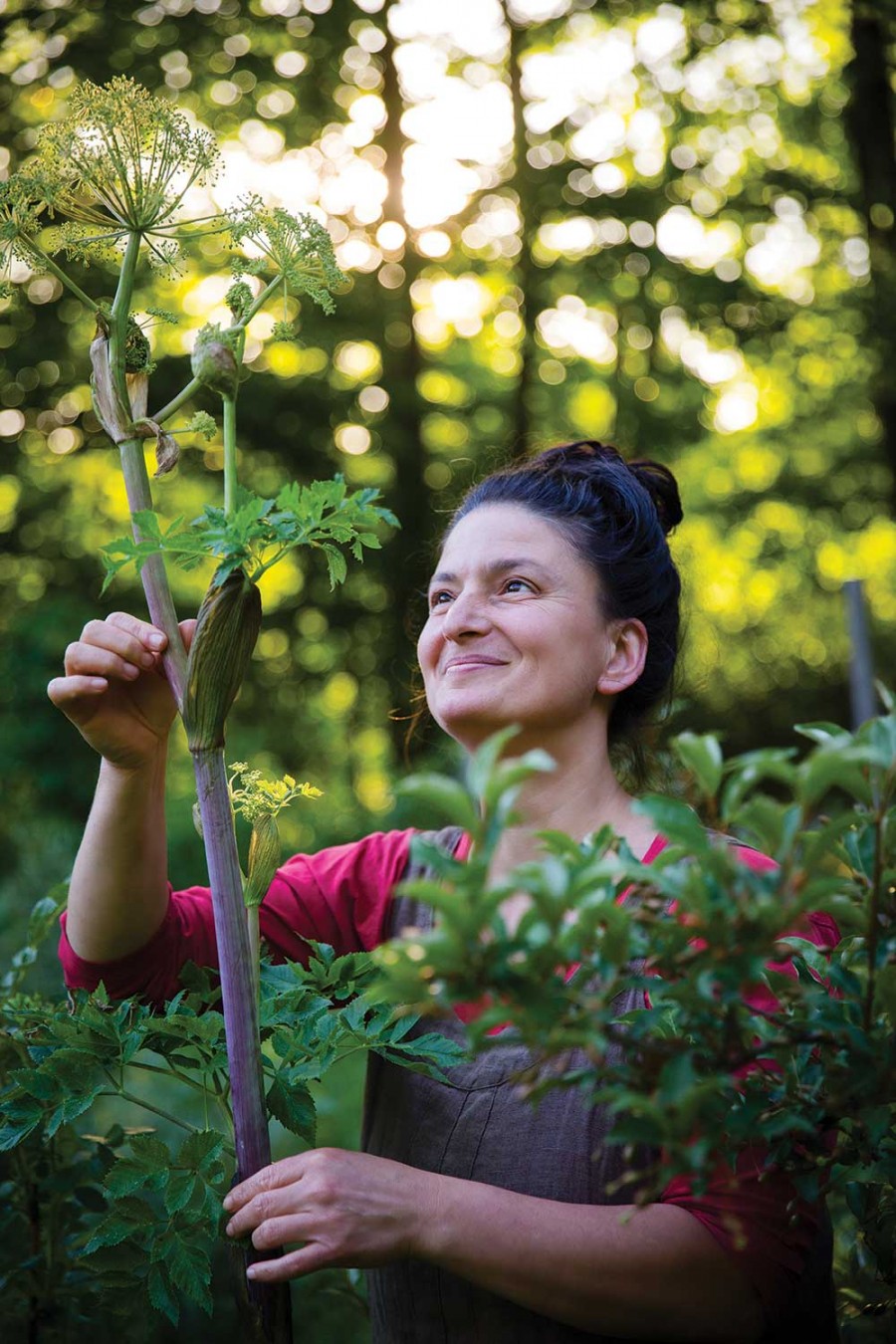
Unintentional companions such as meadowsweet (used in headache and sleep medicines) likewise blossom. “Wild bergamot, native of our region, just grows there. Why would we take it away?” Falconi muses. “The hillside becomes a beautiful lavender color when it peaks. You don’t just chop down a zone and put up what you want. You look at what’s there already and integrate it.” Humans, likewise, have the power to work with the wild, to recognize what grows in our ecosystem and how to use it. “Permaculture offers a wonderful approach to thinking through problems,” Falconi adds.
The culmination of the herbalist’s 20-year aim to empower people by fostering a sustainable, regenerative, and ecological way of eating is her new book, Foraging and Feasting: A Basic Field Guide and Wild Food Cookbook (Botanical Arts Press, 2013). Falconi and botanical illustrator Wendy Hollender self-published and Kickstarter-funded their project, raising a record-breaking $115,000. The book aims to change consciousness. “As a forager, you’re always looking to nature to see what nourishment she provides,” Falconi describes. She also hopes to foster appreciation of the so-called “invasive species” like dandelions, plants that arrive at one’s doorstep. By encouraging people to eat what grows wild, Falconi hopes to nudge readers outside to appreciate “the rhythm and step of nature, smelling, touching, and tasting the wild.”
“Luring people to beautiful foods becomes a way of activism,” says Falconi. She is the Hudson Valley chapter leader of the Weston A. Price Foundation, which holds monthly potlucks at the Marbletown Community Center, and on the Steering Committee of Slow Food Hudson Valley. “To eat healthy, we have to become activists,” she explains.
“As soon as food is for profit and not nourishment, food loses its sacred place in our lives.” Her life work demonstrates how we can cocreate—but not control—the wild Earth. Dina Falconi teaches us to care for the eco-culture, as well as ourselves and each other.

Great article about a fascinating person and her work and art. Thanks.